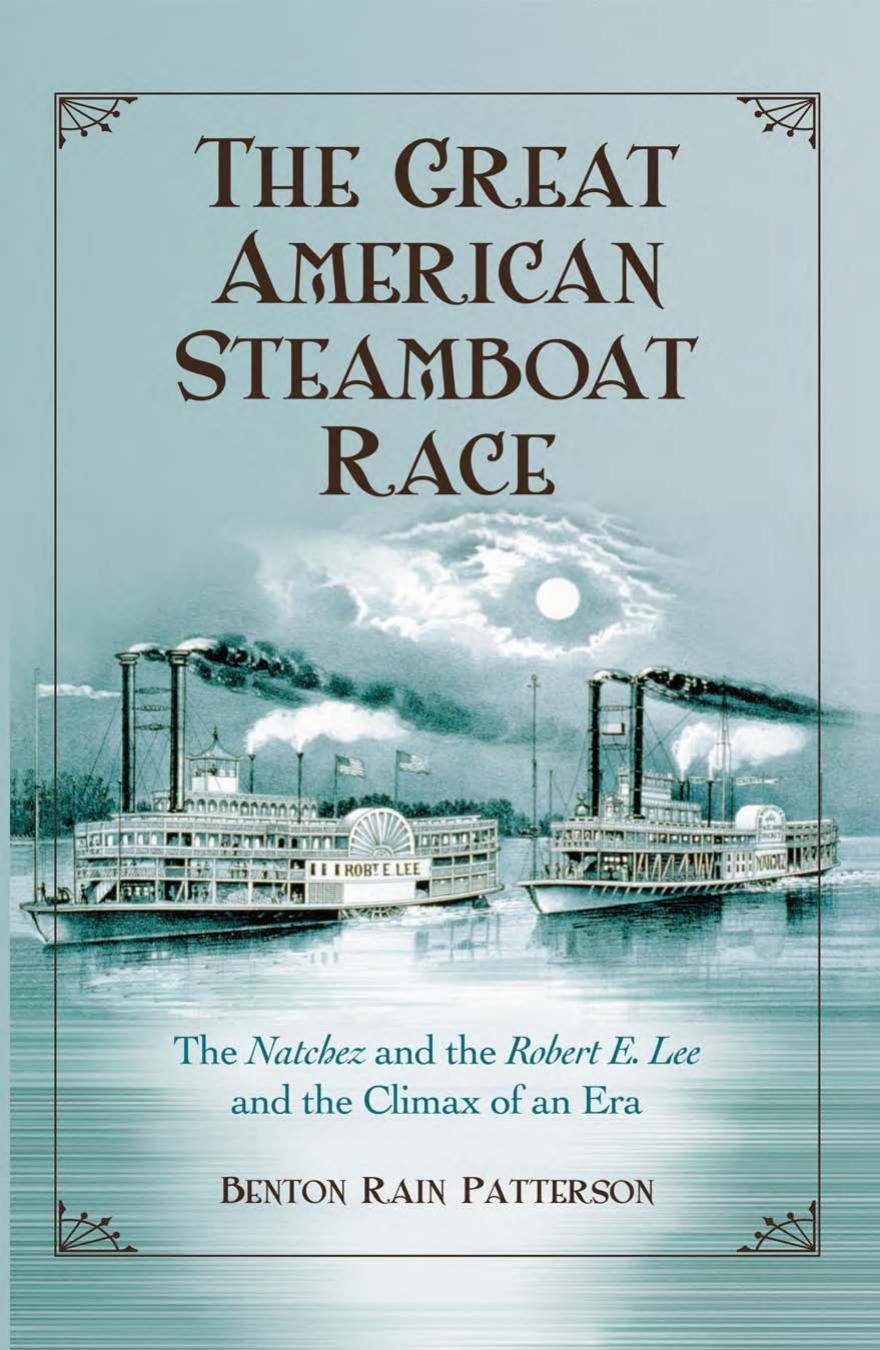The Great American Steamboat Race: The Natchez and the Robert E. Lee and the Climax of an Era by Benton Rain Patterson

Author:Benton Rain Patterson
Language: eng
Format: mobi, epub, pdf
Tags: Boating - General, History: American, USA, Regional History, River steamers, Sports & Recreation, Paddle steamers - Mississippi River - History - 19th century, Boating, United States - 19th Century, Steamboats - Mississippi River - History - 19th century, Transportation, Robert E. Lee (Steamboat), Mississippi River, Ships & Shipbuilding - General, Ships & shipping: general interest, Natchez (Steamboat), United States, Americas, Ships & Shipbuilding, Marine engineering, Marine & Naval, Paddle steamers, 19th century, History, c 1800 to c 1900, Technology & Engineering, Shipbuilding - Mississippi River Region - History - 19th century, History of the Americas, River steamers - Mississippi River - History - 19th century, Marine engineering - Mississippi River Region - History - 19th century, General, 19th Century World History, Shipbuilding, Modern history to 20th century: c 1700 to c 1900, Steamboats
ISBN: 9780786442928
Publisher: McFarland
Published: 2009-05-13T07:00:00+00:00
Stairway leading up from a typical steamboat’s boiler deck, the deck above its main deck, to the hurricane deck, or promenade deck. At right in this photograph is the purser’s, or clerk’s, office. Passengers reached the boiler deck by climbing gracefully curving stairways that rose from the steamer’s main deck near the bow of the boat (Library of Congress).
est, was called the main deck, which stood about four feet above the surface of the river. That was where the boat’s machinery was mounted, with the boilers positioned forward and the engines positioned between the two huge paddle wheels. Some of the boats, of course, had a single paddle wheel, mounted on the stern. Also on the main deck were the galleys, space for freight and space for deck, or steerage, passengers, whose low fares entitled them to little more than passage and a sleeping spot on a cot, a bench or on the boards of the deck itself. Ten to eighteen feet above the main deck and reachable by a pair of curving stairways near the bow, was the boiler deck, or saloon deck, on which were the passenger staterooms, the barroom, the saloon — or main cabin — and the boat’s offices. A promenade, like a porch, encircled the staterooms on the outside and could be accessed from the staterooms, from the saloon or from gangways, allowing cabin passengers to stroll or sit — on benches or chairs — and watch the passing scenery on the river and along the shore.
Download
The Great American Steamboat Race: The Natchez and the Robert E. Lee and the Climax of an Era by Benton Rain Patterson.epub
The Great American Steamboat Race: The Natchez and the Robert E. Lee and the Climax of an Era by Benton Rain Patterson.pdf
This site does not store any files on its server. We only index and link to content provided by other sites. Please contact the content providers to delete copyright contents if any and email us, we'll remove relevant links or contents immediately.
| Canada | Caribbean & West Indies |
| Central America | Greenland |
| Mexico | Native American |
| South America | United States |
Cat's cradle by Kurt Vonnegut(13894)
Pimp by Iceberg Slim(12944)
Underground: A Human History of the Worlds Beneath Our Feet by Will Hunt(11264)
4 3 2 1: A Novel by Paul Auster(11074)
The Radium Girls by Kate Moore(10915)
American History Stories, Volume III (Yesterday's Classics) by Pratt Mara L(4828)
Perfect Rhythm by Jae(4628)
Wiseguy by Nicholas Pileggi(4599)
The Fire Next Time by James Baldwin(4350)
Paper Towns by Green John(4177)
A Higher Loyalty: Truth, Lies, and Leadership by James Comey(4038)
Pale Blue Dot by Carl Sagan(4015)
The Mayflower and the Pilgrims' New World by Nathaniel Philbrick(3918)
The Doomsday Machine by Daniel Ellsberg(3736)
Too Much and Not the Mood by Durga Chew-Bose(3698)
Killers of the Flower Moon: The Osage Murders and the Birth of the FBI by David Grann(3622)
The Borden Murders by Sarah Miller(3593)
The Sympathizer by Viet Thanh Nguyen(3514)
Killing England by Bill O'Reilly(3461)
